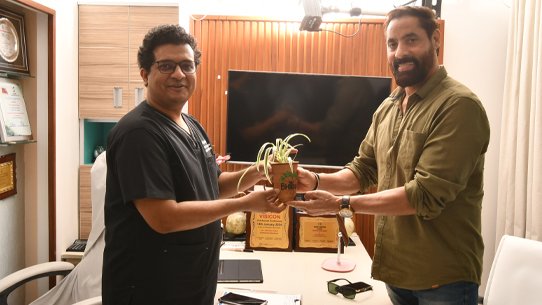Maintaining a balanced diet is essential for overall health and well-being. However, many people believe that eating healthy requires a large budget. The truth is, you can follow a nutritious diet without overspending, especially in a country like India where fresh fruits, vegetables, and grains are abundantly available. This guide will show you how to maintain a balanced diet while keeping your expenses under control.
Understanding a Balanced Diet
A balanced diet consists of the right proportions of carbohydrates, proteins, fats, vitamins, and minerals that your body needs for growth, energy, and overall health. It includes a variety of foods from all food groups:
- Carbohydrates: These are the body’s main source of energy and include rice, wheat, millet, and potatoes.
- Proteins: Essential for growth and repair, proteins are found in legumes, dairy products, eggs, and meat.
- Fats: Healthy fats such as those found in nuts, seeds, and cooking oils are important for brain function and hormone production.
- Vitamins and Minerals: Fruits and vegetables provide essential vitamins and minerals that boost immunity and prevent diseases.
Now, let’s explore how you can make these essential components work for you within a limited budget.
Plan Your Meals in Advance
One of the most effective ways to stick to a balanced diet on a budget is by planning your meals ahead of time. This strategy helps you avoid impulse buys, reduce food wastage, and ensure you’re eating a variety of nutrients.
- Create a Weekly Meal Plan: Plan your meals for the week, focusing on simple, nutritious dishes. Choose recipes that use seasonal ingredients to save money. For example, seasonal vegetables like pumpkin, spinach, and bottle gourd are affordable and nutrient-rich.
- Make a Shopping List: Based on your meal plan, create a shopping list that includes only the items you need. Stick to this list to avoid unnecessary purchases.
- Batch Cooking: Prepare large batches of meals that can be stored and eaten throughout the week. This saves both time and money.
Focus on Local and Seasonal Produce
Fresh, seasonal produce is generally more affordable than imported or out-of-season fruits and vegetables. In India, seasonal fruits and vegetables not only cost less but are also fresher and more nutritious.
- Seasonal Vegetables: For example, tomatoes, cauliflower, and okra are often available at lower prices during their respective seasons. Buy in bulk when prices are low and freeze what you can’t consume immediately.
- Local Grains and Legumes: Staple foods like rice, lentils, and pulses are typically affordable and provide essential nutrients. They form the foundation of many Indian meals and are rich in protein and fiber.
- Buy from Local Markets: Traditional markets or local vendors usually offer better deals than supermarkets. Try to buy your produce directly from these sources, especially in rural or semi-urban areas, where prices tend to be lower.
Choose Cost-Effective Protein Sources
Proteins are an essential part of a balanced diet, but they can sometimes be expensive, especially meat and fish. Fortunately, there are many affordable alternatives that are high in protein and can be included in your meals.
- Legumes and Pulses: Lentils (dal), chickpeas, black beans, and other legumes are excellent, budget-friendly protein sources. They can be used in a variety of dishes, from curries to soups.
- Eggs: Eggs are an affordable source of high-quality protein. They are versatile and can be incorporated into breakfasts, snacks, and main meals.
- Dairy: Milk, curd (yogurt), and paneer (cottage cheese) are rich in protein and calcium and are affordable in most parts of India. Opt for locally produced dairy products for better prices.
- Tofu and Soy Products: For a vegetarian protein source, tofu and other soy-based products are inexpensive and nutrient-dense.
Embrace Whole Grains
Whole grains are an affordable source of carbohydrates, fiber, and various essential nutrients. These grains are more nutritious than refined grains, which lose much of their fiber and vitamins during processing.
- Rice and Wheat: Both rice and wheat are staples in many Indian households. Opt for brown rice or whole wheat flour for a healthier alternative to their refined counterparts.
- Millets: Millets like bajra, jowar, and ragi are excellent alternatives to rice and wheat. They are high in fiber and micronutrients and are often more affordable than popular grains.
- Oats: Oats are not only inexpensive but also versatile and can be used for breakfast or as a base for other meals. They provide both fiber and protein.
Minimize Processed Foods
Processed foods like ready-to-eat snacks, packaged meals, and sugary drinks are often high in unhealthy fats, sugars, and salts. These foods are also more expensive than whole, fresh foods. While it’s okay to indulge occasionally, it’s better to minimize their consumption in favor of homemade, nutritious meals.
- Homemade Snacks: Instead of purchasing expensive snacks, prepare simple, healthy snacks like roasted chickpeas, vegetable chips, or fruit salads.
- Avoid Sugary Drinks: Opt for homemade juices, herbal teas, or simply water instead of purchasing sodas or sugary beverages.
Cook at Home
Eating out or ordering takeout is often more expensive than cooking at home. Preparing your meals allows you to control the ingredients and portion sizes, making it easier to follow a balanced diet without exceeding your budget.
- Cook in Bulk: Prepare large portions of staple foods like dal, rice, and vegetable curries and store them for multiple meals.
- Use Leftovers Creatively: Reuse leftovers in new dishes, such as using leftover rice for fried rice or turning extra vegetables into a soup.
Drink Plenty of Water
Water is essential for digestion, hydration, and overall health. It is also the most cost-effective drink you can have. Avoid spending money on bottled drinks or sugary beverages and instead, make water your primary source of hydration.
- Carry a Water Bottle: Keep a reusable water bottle with you throughout the day to ensure you’re drinking enough water.
Conclusion
Eating a balanced diet in India doesn’t have to be expensive. By planning your meals, focusing on local and seasonal produce, choosing cost-effective protein sources, and cooking at home, you can maintain a healthy diet while staying within your budget. Remember, small changes in your food choices can add up to big savings over time, all while supporting your health and well-being.














